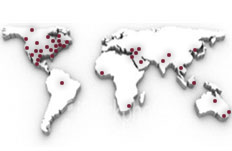Mission:
IEM develops, produces, and markets innovative imaging, optical and other sensor-based systems for safety and security applications in the intelligent transportation system industry. By combining innovative sensor systems with advanced software, IEM creates WISE solutions for use in vehicle inspection, security monitoring, maintenance activities, and more. IEM leverages research and development for the Department of Defense and other government and industrial partners to develop core technologies.
Services Provided:
IEM is a full-service company offering a complete range of services including:
- Research & Development
- Product Engineering
- Software Development
- Manufacturing
- Sales and Marketing
- System Installation
- Post Installation Service
Markets Served:
IEM provides a combination of products based on proven technology and advanced research & development for the following primary markets:
- Freight Railroads
- Rail Transit
- Railroad Wheel Shops
- Intelligent Transportation Systems
- Defense
- Security Surveillance and Monitoring
- Robotics
Core Competencies:
IEM meets our customer’s needs through a combination of past experience, cutting edge research & development, and a deep understanding of technical challenges and solutions. IEM has developed core competency in several important technologies relevant to our intended markets.
- Machine Vision and Video Analytics
- Infrared and Thermal Imaging
- Non-Contact and Non-Destructive Evaluation
- Wireless Sensors and Sensor Networks
- Power Harvesting
- Security Monitoring
- Robotics
History:
Established in 1987, IEM has more than 20 years of transportation safety & security experience. Initially founded to manufacture and market our original Electronic Wheel Gauge, which together with the Mini-EWG remains the only electronic gauge approved for use by the Association of American Railroads as a replacement for the manual steel wheel gauge, IEM has expanded our core business in several directions.
Since the mid-1990’s IEM has taken advantage of government funded R&D programs that have enabled us to not only support important research activities for the government, but also to leverage that work in development of products that build upon the results of our R&D efforts.
For example, in 1993, IEM received initial funding from the Federal Railway Administration for the early development of our machine-vision based railroad wheel profile measurement technology. With subsequent funding by the Transportation Research Board, the New York State Energy Research and Development Authority, and support from Amtrak IEM has successfully transitioned this into our patented TrueProfile™ technology now an integral part of IEM’s Wheel Inspection System Environment for freight and transit systems.
By 2005, IEM had established an approach to meeting customer needs that begins with a comprehensive understanding of needs and identification of creative solutions. Then, IEM focuses our experience and advanced R&D capabilities to explore options, to build and test prototypes, and to ultimately offer a product that uniquely meets our customer’s needs.
Quality Management:
“IEM will meet our customer’s needs with innovative products while we improve our business”
This formal Quality Policy drives IEM’s commitment to providing a quality product or service to each of our customers. Our ISO 9001:2008 certified Business Management Plan sets forth nine Key Business Processes that are governed by explicit procedures and work plans to assure that we meet customer needs and that we continue to improve our business practices.
The Key Business Processes include:
- Engineering
- Production
- Organization Management
- Business Development
- Customer Relations
- Purchasing
- Administration
- Infrastructure
- Knowledge Innovation and Management
Strategic Partners:
IEM collaborates on virtually all projects with experts in relevant areas. Over the years IEM has established a large number of strategic alliances with universities, federal research laboratories, federal and state government agencies, and both small and large corporations.


